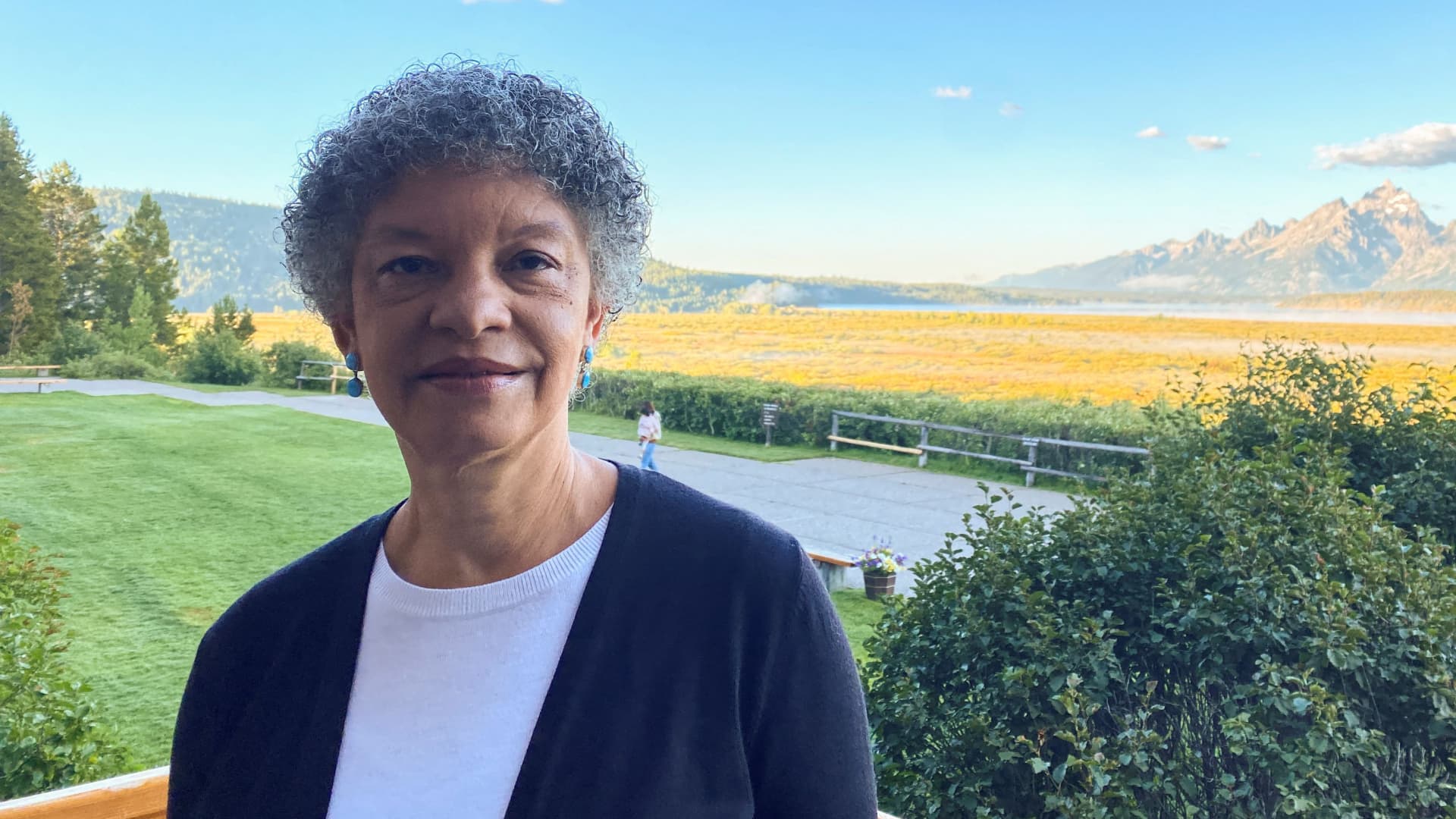Federal Reserve Bank of Boston President Susan Collins stands behind the Jackson Lake Lodge in Jackson Hole, where the Kansas City Fed holds its annual economic symposium, in Wyoming, August 24, 2023.
Ann Saphir | Reuters
Boston Federal Reserve President Susan Collins advocates for a patient approach to policymaking and stresses the need for more evidence to confirm if inflation has been successfully controlled. Her remarks echo the sentiment of other central bankers, who believe that the Fed may have reached or is nearing the peak for interest rates. However, depending on future data, there may be a need for further rate increases.
Collins emphasizes the importance of proceeding cautiously in a volatile economic climate, acknowledging the existing risks while remaining committed to data-driven decision-making. This perspective aligns with recent statements from Fed Chair Jerome Powell and Governor Christopher Waller, both of whom support a patient approach but exercise caution in interpreting positive developments on inflation. They are prepared to implement additional rate hikes if necessary.
In a CNBC interview, Waller highlights the Fed’s ability to proceed carefully with policy decisions, drawing from past experiences when inflation initially slowed but rebounded unexpectedly. Collins acknowledges some positive indicators regarding inflation, citing the Fed’s preferred gauge, which rose only by 0.2% in July, and a potential slowdown in wage growth. However, she notes the challenges of distinguishing meaningful trends from temporary fluctuations in the data.
Collins expresses reservations about considering recent improvements as evidence of sustained inflation returning to the target rate of 2%. Being a nonvoting member on the Federal Open Market Committee this year, Collins believes it’s premature to draw definitive conclusions and will reassess her stance when she regains her voting position in 2025.
Additionally, Collins acknowledges the time lags associated with the impact of Fed policy on the economy. While economists generally expect rate hikes to take around a year to a year and a half to permeate the economy, Collins suggests that factors such as the ongoing effects of the pandemic and the overall strength of household and corporate balance sheets could extend these lags. This calls for a more cautious approach to policy decisions in order to achieve an orderly slowdown and align demand with supply for sustainable inflation control.
Market pricing indicates that the likelihood of a rate hike at the Fed’s upcoming Sept. 19-20 policy meeting is low, according to CME Group data. However, there is a close call for the Oct. 31-Nov. 1 meeting, with a 43% probability assigned to one final rate increase.
Denial of responsibility! Vigour Times is an automatic aggregator of Global media. In each content, the hyperlink to the primary source is specified. All trademarks belong to their rightful owners, and all materials to their authors. For any complaint, please reach us at – [email protected]. We will take necessary action within 24 hours.


